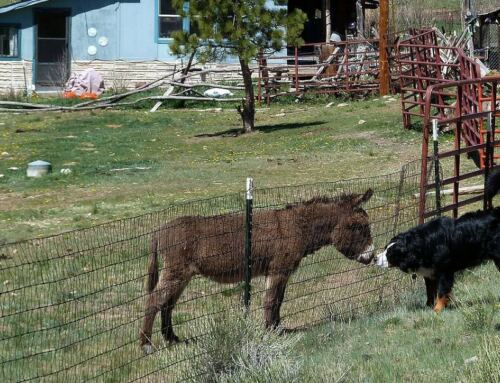 Giving a dog an interim home while they are in the rescue system is a kind and generous act. Few who do it seem to realize how important the role they play is. It goes beyond providing a safe and comfortable place for a dog to reside while a permanent home is sought for them.
Giving a dog an interim home while they are in the rescue system is a kind and generous act. Few who do it seem to realize how important the role they play is. It goes beyond providing a safe and comfortable place for a dog to reside while a permanent home is sought for them.
Though they are not pack animals, dogs are social animals. For social animals one of the most stressful events they can experience is the loss of their familiar social network, i.e., moving. Even if a dog appears to be happy and outgoing when they arrive in a foster home, we should assume that their level of stress is higher than it would be otherwise. Many dogs are able to cope with this and settle in with little trouble as they navigate their new surroundings and the expectations put on them by people and other dogs. But foster caregivers would be wise to consider how stress and relocation can impact a dog’s current and future behavior. Stress alone does not cause disease or inappropriate behavior, but it can contribute to the equation that produces it.
A dog who in their former life never put a tooth on a person or other dog, even though the opportunity existed, is less likely to do so in a new home than a dog with a history of biting, but add a healthy (unhealthy?) dose of stress and the odds that we’ll see this behavior increases. Within the shelter and rescue system people will look at a dog’s “bite history.” In many cases there are no opportunities for a dog to make an appeal once they have bitten a person or pet.
“But your honor he pulled on my ear and I have a raging infection in there!”
“She sat on me!”
“I was being threatened by another dog and the woman grabbed my collar.”
“I was eating that bone.”
“It was small, fluffy and ran right under my nose so I grabbed it.”
Foster caregivers have the responsibility to ensure that at the very minimum they do not add to the list of things that upset a dog, or provoke a behavioral response everyone will regret. One of the privileges I have is consulting with rescue groups pulling dogs out of shelters where many are euthanized. I see the important role that foster caregivers play. In some cases they literally save a dog’s life by providing a place for the dog to go when its time is up at an open-door shelter. This blog is one in a series which I will write addressing how foster caregivers can move a dog in transition away from the edge of the cliff, and avoid pushing them off, as they begin their journey to safety.





